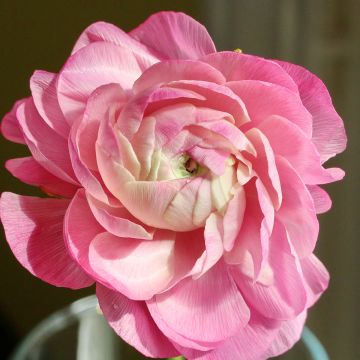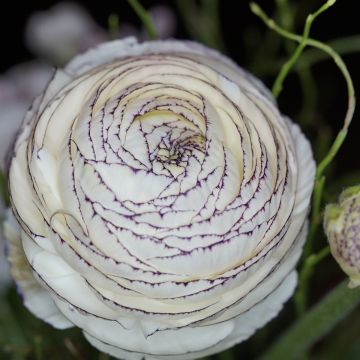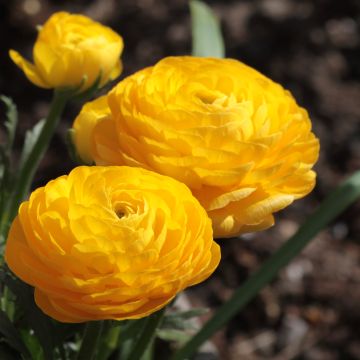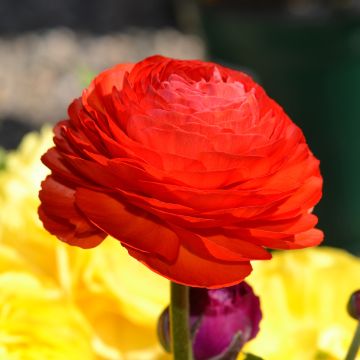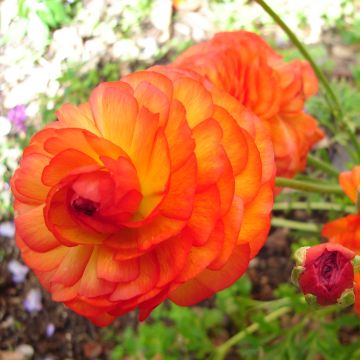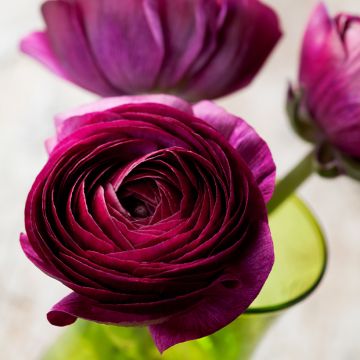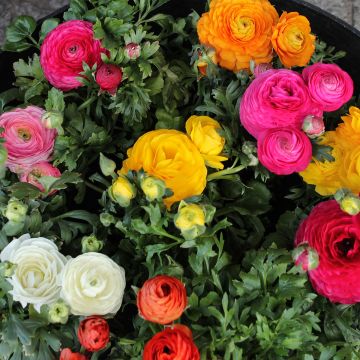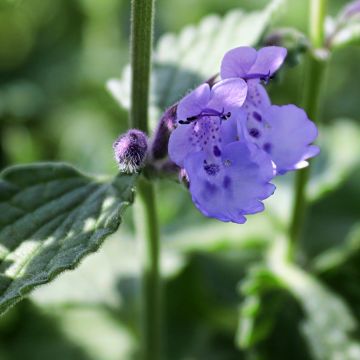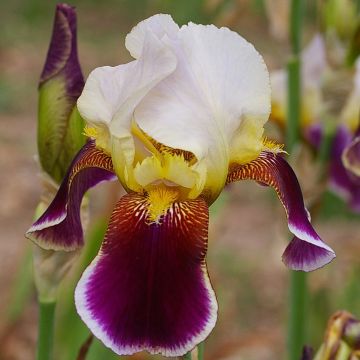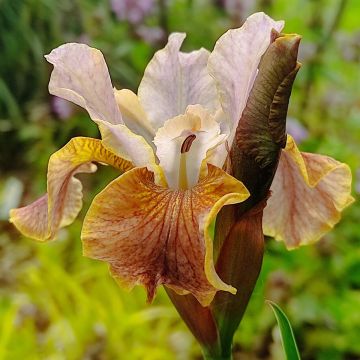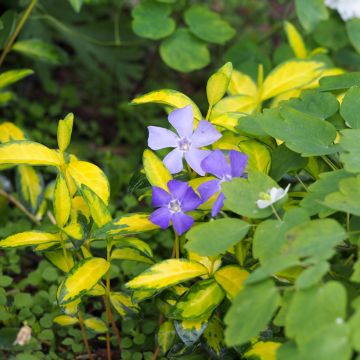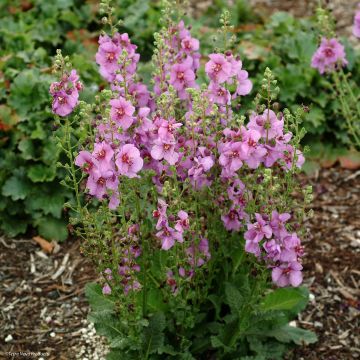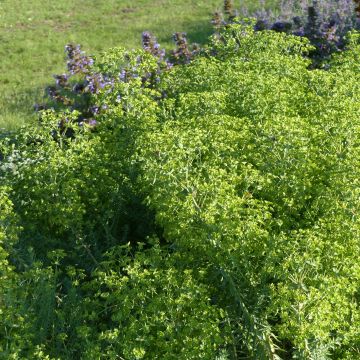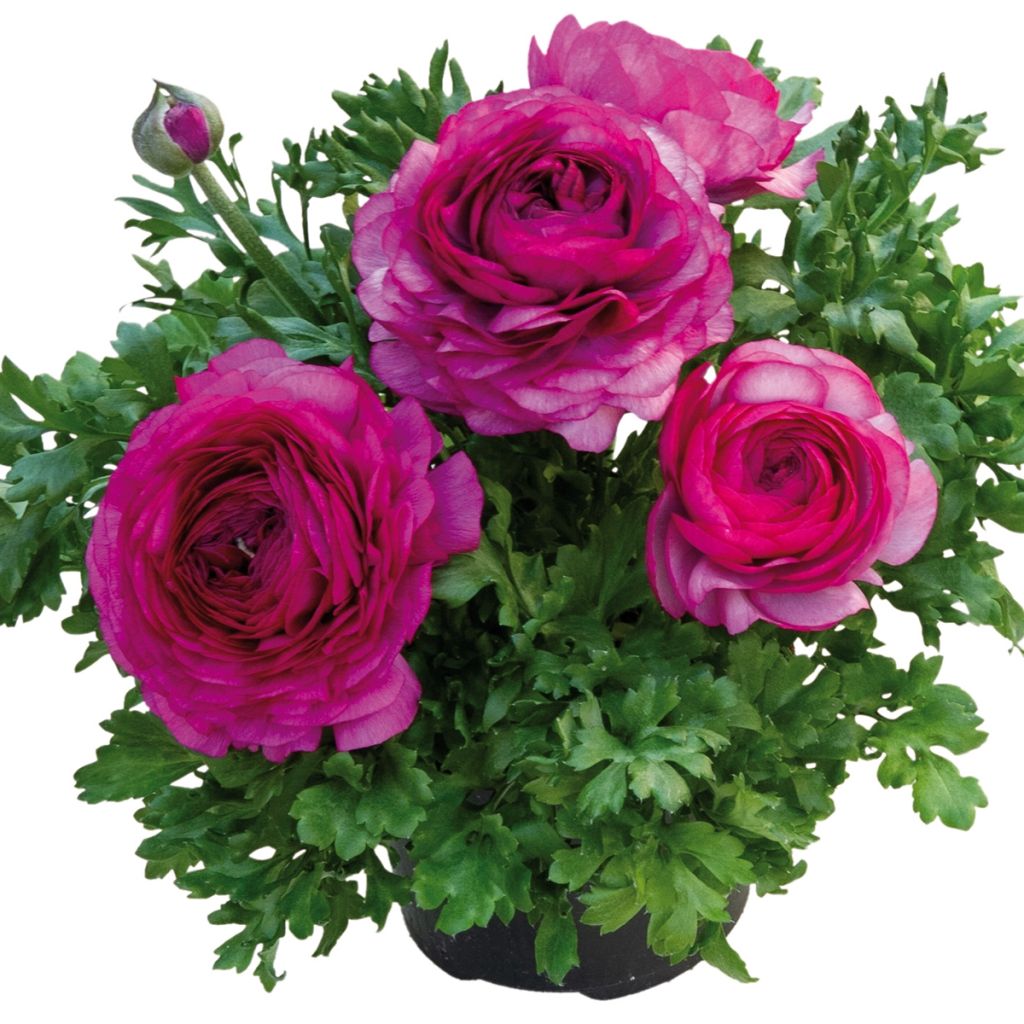

Renoncule des fleuristes Vortex F1 Purple - Ranunculus hybrida
Ranunculus hybrida Vortex F1 Purple - Persian Buttercup
Ranunculus hybrida Vortex F1 Purple
Persian Buttercup, Asian Buttercup
Extremely small and fragile plants. Planted them right away but not sure if they'll take, I even struggle to find them.
Av, 20/11/2024
Why not try an alternative variety in stock?
View all →This plant carries a 6 months recovery warranty
More information
We guarantee the quality of our plants for a full growing cycle, and will replace at our expense any plant that fails to recover under normal climatic and planting conditions.
From €5.90 for pickup delivery and €6.90 for home delivery
Express home delivery from €8.90.

Does this plant fit my garden?
Set up your Plantfit profile →
Description
The Vortex F1 Purple florist's buttercup, like all hybrids in the Vortex F1 series, has a compact habit, well-branched upright growth, and a very rich color. This Purple variety produces perfectly double flowers ranging in colour from purple violet to pinkish purple to lavender. It is a small perennial bulbous plant, but sensitive to cold, often cultivated as a biennial. It will bring a sparkling touch to perennial borders and make charming potted displays. Not content with its beauty, its very coquettish flowers last 3 weeks in a vase. It can be grown in partial shade or full sun, in moist, humus-rich soil.
The Asian buttercup Ranunculus asiaticus, also known as garden buttercup or Oriental buttercup, is a perennial herbaceous plant with tubers native to the eastern Mediterranean (Greece, Crete). It belongs to the buttercup family, just like our Buttercup. This botanical species has given rise to many cultivars through hybridization, which are collectively referred to as Ranunculus (x) hybrida. The Vortex F1 Purple Buttercup is a compact variety that does not exceed 20 cm (8in) in height, with early spring flowering, often used for ornamental containers. From late March to late May, each plant bears numerous large flowers with very full cups and delicate petals. These flowers measure 3 to 5 cm (1 to 2in) in diameter, with their centers filled with small petals resembling a whirlwind, which inspired the name of this hybrid series 'Vortex'.
Its foliage forms a rosette. The basal leaves measure 10 to 15 cm (4 to 6in) in length. They are pale to dark green, divided into three deep lobes. At maturity, this Asian buttercup can reach 35 cm (14in) in height. It is a less hardy plant that can withstand temperatures down to -10°C. Its root is long-lived, consisting of several small elongated tubers gathered in a vascular bundle, which are sometimes called "claws".
The Vortex F1 Purple buttercup can be cultivated in borders, edging, rockeries, and even in pots on a terrace. It is a highly ornamental plant that is also used in bouquets for its excellent longevity. It can be combined in floral arrangements with other varieties of different colours, with old roses that resemble it so much, or even with modern roses with perfect forms in shades of purple, pink, white, or mauve. Lavender-flowered catmints are also good companions for this variety, as well as lobelias and love-in-a-mist. By lifting the tubers in autumn and storing them before the first frost, this plant can be grown like a gladiolus.
Report an error about the product description
Flowering
Foliage
Plant habit
Botanical data
Ranunculus
hybrida
Vortex F1 Purple
Ranunculaceae
Persian Buttercup, Asian Buttercup
Cultivar or hybrid
Other Ranunculus bulbs
Planting and care
The Florist's Buttercup is planted in autumn, in mild climates or in pots, for early flowering (April-May) or in spring, in cold climates, for summer flowering. It thrives in partial shade as well as in full sun. Place it in a light soil, optionally enriched with coarse sand, humus and fresh water. This plant dislikes limestone soils. In autumn, remove the tubers and store them in a dry and cool place to protect them from frost as they are not very hardy. Before planting, we recommend soaking the bulbs for half a day. During planting, plant the tubers in an equal mixture of garden soil, leaf compost and coarse river sand. It flowers 120 days after planting. Planting density: 16 to 20 bulbs per square meter.
Planting period
Intended location
Care
-
, onOrder confirmed
Reply from on Promesse de fleurs
Spring flowering perennials
Haven't found what you were looking for?
Hardiness is the lowest winter temperature a plant can endure without suffering serious damage or even dying. However, hardiness is affected by location (a sheltered area, such as a patio), protection (winter cover) and soil type (hardiness is improved by well-drained soil).

Photo Sharing Terms & Conditions
In order to encourage gardeners to interact and share their experiences, Promesse de fleurs offers various media enabling content to be uploaded onto its Site - in particular via the ‘Photo sharing’ module.
The User agrees to refrain from:
- Posting any content that is illegal, prejudicial, insulting, racist, inciteful to hatred, revisionist, contrary to public decency, that infringes on privacy or on the privacy rights of third parties, in particular the publicity rights of persons and goods, intellectual property rights, or the right to privacy.
- Submitting content on behalf of a third party;
- Impersonate the identity of a third party and/or publish any personal information about a third party;
In general, the User undertakes to refrain from any unethical behaviour.
All Content (in particular text, comments, files, images, photos, videos, creative works, etc.), which may be subject to property or intellectual property rights, image or other private rights, shall remain the property of the User, subject to the limited rights granted by the terms of the licence granted by Promesse de fleurs as stated below. Users are at liberty to publish or not to publish such Content on the Site, notably via the ‘Photo Sharing’ facility, and accept that this Content shall be made public and freely accessible, notably on the Internet.
Users further acknowledge, undertake to have ,and guarantee that they hold all necessary rights and permissions to publish such material on the Site, in particular with regard to the legislation in force pertaining to any privacy, property, intellectual property, image, or contractual rights, or rights of any other nature. By publishing such Content on the Site, Users acknowledge accepting full liability as publishers of the Content within the meaning of the law, and grant Promesse de fleurs, free of charge, an inclusive, worldwide licence for the said Content for the entire duration of its publication, including all reproduction, representation, up/downloading, displaying, performing, transmission, and storage rights.
Users also grant permission for their name to be linked to the Content and accept that this link may not always be made available.
By engaging in posting material, Users consent to their Content becoming automatically accessible on the Internet, in particular on other sites and/or blogs and/or web pages of the Promesse de fleurs site, including in particular social pages and the Promesse de fleurs catalogue.
Users may secure the removal of entrusted content free of charge by issuing a simple request via our contact form.
The flowering period indicated on our website applies to countries and regions located in USDA zone 8 (France, the United Kingdom, Ireland, the Netherlands, etc.)
It will vary according to where you live:
- In zones 9 to 10 (Italy, Spain, Greece, etc.), flowering will occur about 2 to 4 weeks earlier.
- In zones 6 to 7 (Germany, Poland, Slovenia, and lower mountainous regions), flowering will be delayed by 2 to 3 weeks.
- In zone 5 (Central Europe, Scandinavia), blooming will be delayed by 3 to 5 weeks.
In temperate climates, pruning of spring-flowering shrubs (forsythia, spireas, etc.) should be done just after flowering.
Pruning of summer-flowering shrubs (Indian Lilac, Perovskia, etc.) can be done in winter or spring.
In cold regions as well as with frost-sensitive plants, avoid pruning too early when severe frosts may still occur.
The planting period indicated on our website applies to countries and regions located in USDA zone 8 (France, United Kingdom, Ireland, Netherlands).
It will vary according to where you live:
- In Mediterranean zones (Marseille, Madrid, Milan, etc.), autumn and winter are the best planting periods.
- In continental zones (Strasbourg, Munich, Vienna, etc.), delay planting by 2 to 3 weeks in spring and bring it forward by 2 to 4 weeks in autumn.
- In mountainous regions (the Alps, Pyrenees, Carpathians, etc.), it is best to plant in late spring (May-June) or late summer (August-September).
The harvesting period indicated on our website applies to countries and regions in USDA zone 8 (France, England, Ireland, the Netherlands).
In colder areas (Scandinavia, Poland, Austria...) fruit and vegetable harvests are likely to be delayed by 3-4 weeks.
In warmer areas (Italy, Spain, Greece, etc.), harvesting will probably take place earlier, depending on weather conditions.
The sowing periods indicated on our website apply to countries and regions within USDA Zone 8 (France, UK, Ireland, Netherlands).
In colder areas (Scandinavia, Poland, Austria...), delay any outdoor sowing by 3-4 weeks, or sow under glass.
In warmer climes (Italy, Spain, Greece, etc.), bring outdoor sowing forward by a few weeks.

































